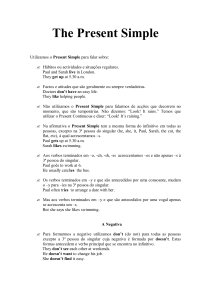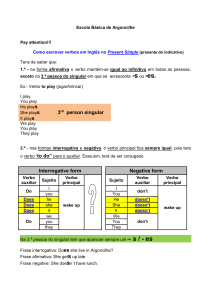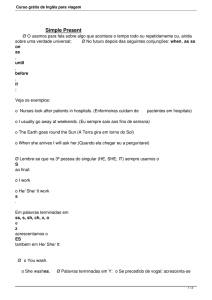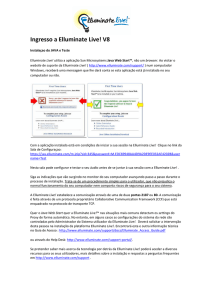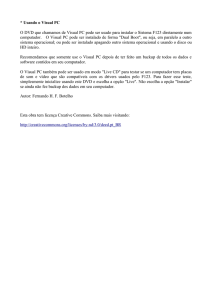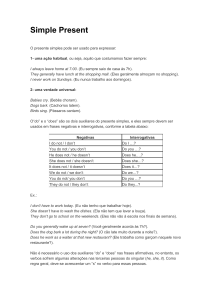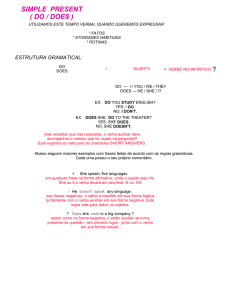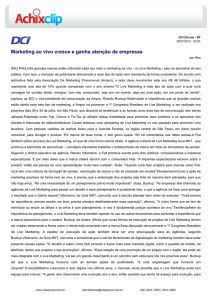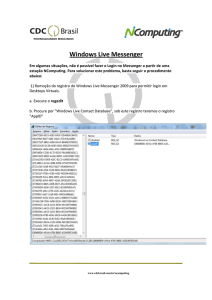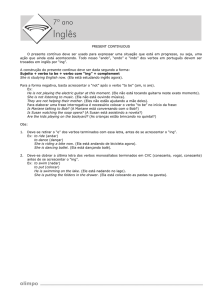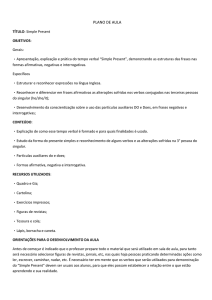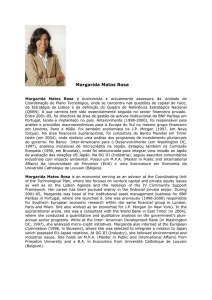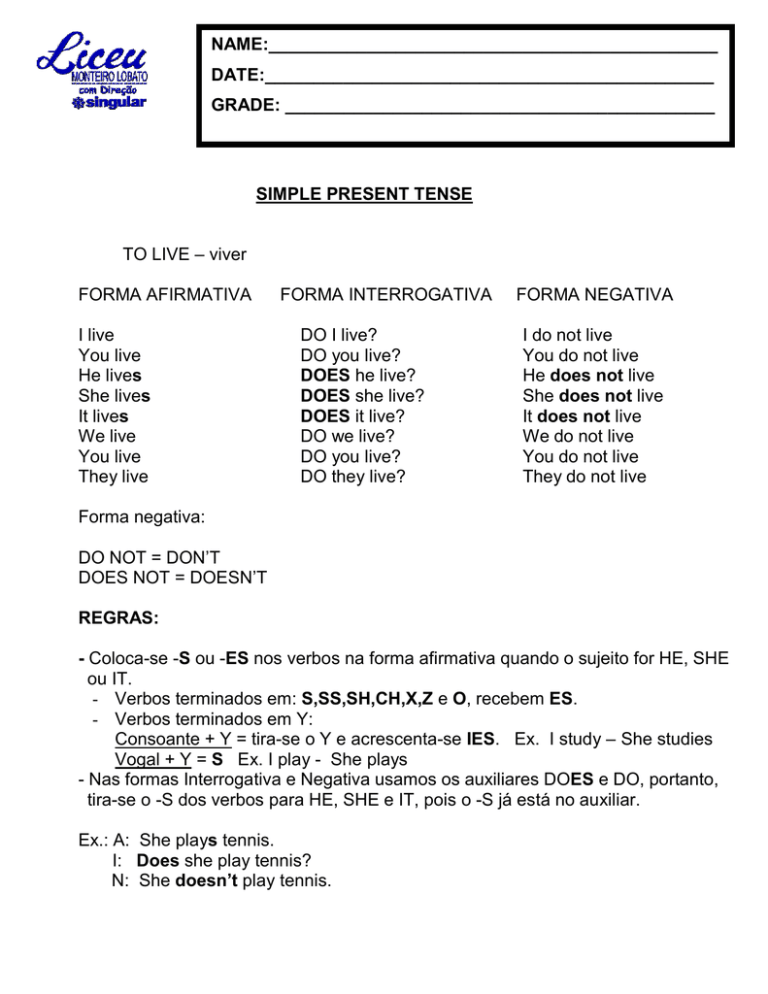
NAME:______________________________________________
DATE:______________________________________________
GRADE: ____________________________________________
SIMPLE PRESENT TENSE
TO LIVE – viver
FORMA AFIRMATIVA
I live
You live
He lives
She lives
It lives
We live
You live
They live
FORMA INTERROGATIVA
DO I live?
DO you live?
DOES he live?
DOES she live?
DOES it live?
DO we live?
DO you live?
DO they live?
FORMA NEGATIVA
I do not live
You do not live
He does not live
She does not live
It does not live
We do not live
You do not live
They do not live
Forma negativa:
DO NOT = DON’T
DOES NOT = DOESN’T
REGRAS:
- Coloca-se -S ou -ES nos verbos na forma afirmativa quando o sujeito for HE, SHE
ou IT.
- Verbos terminados em: S,SS,SH,CH,X,Z e O, recebem ES.
- Verbos terminados em Y:
Consoante + Y = tira-se o Y e acrescenta-se IES. Ex. I study – She studies
Vogal + Y = S Ex. I play - She plays
- Nas formas Interrogativa e Negativa usamos os auxiliares DOES e DO, portanto,
tira-se o -S dos verbos para HE, SHE e IT, pois o -S já está no auxiliar.
Ex.: A: She plays tennis.
I: Does she play tennis?
N: She doesn’t play tennis.
A: They play tennis.
I: Do they play tennis?
N: They don’t play tennis.
ADVÉRBIOS E EXPRESSÕES:
- ALWAYS
- USUALLY
- OFTEN
- SOMETIMES
- RARELY
- NEVER
- EVERY DAY, EVERY WEEK, EVERY...
- VERY OFTEN
- ONCE A WEEK
- TWICE A WEEK
- THREE TIMES A DAY, WEEK, MONTH, YEAR
- ON + DIAS DA SEMANA. (ON MONDAYS)
Posição dos advérbios:
- Os advérbios aparecem antes do verbo.
Ex.: She always plays tennis.
- As expressões aparecem no final da frase.
Ex.: She plays tennis twice a week.
- Se o verbo da frase for o TO BE, o advérbio ficará após o verbo.
Ex.: She is always late for school.

